
Every yogi—be it an amateur or a master—would be familiar with ‘pranayama’, the practice of breath regulation. Identified as one of the major components of yoga, this breathing exercise is considered an effective means to self-regulation and the facilitation of physical, mental and emotional well-being.
According to Sanskrit, the word ‘pranayama’ can be interpreted in two ways—prana (life force) + yama (control) and prana + ayama (expansion). While the first version translates to restraining and controlling your breath, the other focuses on freeing it. As yoga is all about balance and harmony, I like to believe that pranayama involves both control and freedom.
But to fully benefit from pranayama practice, one has to connect with ‘prana’, the underlying life force energy. Through this article, I will guide you on the quest to discover prana energy and thereby unlock the door to self-awareness.
What Is Prana?
As pranayama is popularly interpreted as breath control, people tend to mistake ‘prana’ for breath. But it is much more than that.
When translated literally, the Sanskrit word prana means ‘vital force, ‘breath of life’, or ‘life force energy.’ Swami Satyananda Saraswati describes prana as “a type of energy responsible for the body’s life, heat, and maintenance.”
References to the subtle energy of prana can be traced back to 3000-year old Vedic texts and the ancient archives of Ayurveda, Tantra Yoga and Hatha Yoga. It surfaces in eastern languages as ‘qi’, ‘chi’, and ‘ki’, thus establishing itself as the foundation of the healing practices Qi Gong, Tai Chi, and Reiki respectively. You may also come across it in traditional references like ‘ruh’ in Islam, ‘ruah’ in Hebrew, and the ‘Holy Spirit’ in Christianity.
You Might Also Like: 21 Things You Should Know About White Tantra
Though known by many names, the essence of prana energy remains the same across geographies, languages and traditions. The science of yoga believes that you have two bodies—physical and pranic. While the tangible, physical body is made of flesh and bones, the pranic body extends beyond it—though you cannot see it, you can feel it in the form of vital energy.
The Nadis
Just like how blood flows through your veins, capillaries, and arteries in your physical body, the life force pulsates in you through energy pathways called ‘nadis’, the nervous system of your pranic body.
This network of energy pathways comprises a main central channel, two main side channels—the Sun and the Moon—and based on various yogic texts, about 72,000 smaller channels. Let’s take a closer look at the three main channels.
- The Sun Channel: Known as the ‘pingala’ nadi, the sun channel resides on the right-hand side of your spine and is represented by the Sanskrit syllable ‘ha’. This nadi is associated with “hot” prana energies like anger, jealousy, aversion, separation, and dislike. These energies are characterized as ‘downward travelling’ as they flow down the pingala nadi, making you experience a rejection of the outside world, leading you to mistakenly believe that avoiding a certain person or an object can grant you eternal happiness.
- The Moon Channel: Known as the ‘ida’ nadi, the moon channel runs on the left-hand side of your spine and is represented by the Sanskrit syllable ‘tha’. Like the moon, the prana energies that flow through this channel are cool—craving, attachment, desire, and fondness. These energies flow upward with each inhalation, causing you to covet a certain object or a person in order to feel happy.
- Main Central Channel: Known as ‘sushumna’ nadi, the main central channel runs just in front of your spine. This Sanskrit term refers to the hum of bliss that you experience from the flow of prana energy through this nadi. The very purpose of Hatha Yoga is to redirect the energies from ‘ha’ and ‘tha’ to the central channel, so as to attain samadhi, the deepest state of meditation. The prana energies that flow through this nadi include wisdom, joy, pure thoughts, and contentment.
The Chakras
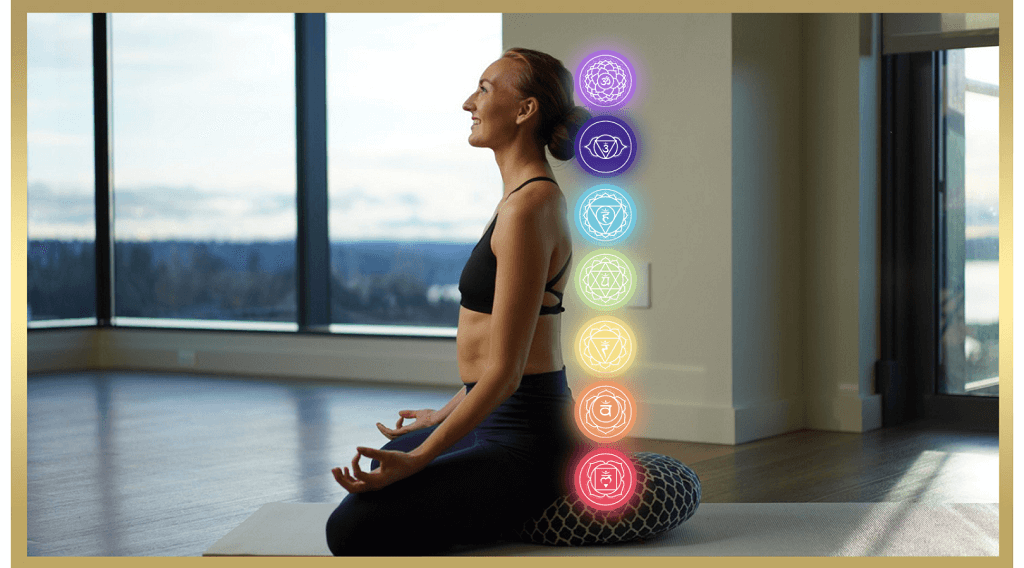
When these three nadis intersect, the prana energy is said to form wheel-like shapes or chakras at each point of contact. Though there are uncountable chakras in your subtle body, 114 out of them are the most prominent. These can be further categorized into seven major chakras, 21 minor chakras, and 86 micro chakras.
Take my chakra quiz to find your dominant chakra:
Here’s a quick overview of the seven major chakras:
1. Root Chakra (Muladhara): The root chakra represents the foundation of your mind and body. When the root chakra is open, you feel secure and grounded. This chakra controls factors that involve survival like food, money, and independence. A blocked root chakra can lead to physical issues like bladder or colon problems, constipation, and arthritis. It may also cause you to feel insecure about your financial stability and well-being.
The age it develops: 1-7 years
Location: Base of spine
Element: Earth
Color: Red
Yoga Pose: Warrior I Pose
2. Sacral Chakra (Swadhisthana): The sacral chakra determines how you process your emotions and relate to those of others. This chakra controls your sense of self-worth around pleasure, sexuality, and creativity. A blocked sacral chakra can manifest into lower back pain, urinary tract infections, or impotence. It could also cause you to question your feelings towards others.
The age it develops: 8-14 years
Location: Lower abdomen
Element: Water
Color: Orange
Yoga Pose: Bound Angle Pose
3. Solar Plexus Chakra (Manipura): The solar plexus chakra is connected to your personal power. It regulates your confidence, self-awareness, and the ability to take control of life. When the solar plexus chakra is blocked, it may lead to physical discomforts like eating disorders, digestive issues, heartburn, and indigestion. It could also disrupt your mind by affecting your self-esteem.
The age it develops: 15-21 years
Location: Upper abdomen
Element: Fire
Color: Yellow
Yoga Pose: Boat pose
4. Heart Chakra (Anahata): The heart chakra which comes in the center, is the bridge between the lower chakras linked to materialism and the upper chakras linked to spirituality. As the name suggests, the heart chakra influences your ability to give and receive love. If you have a blocked heart chakra, you may experience asthma, heart problems, and issues with your body weight. You may also find it difficult to accept yourself or open up to others.
The age it develops: 21-28 years
Location: Center of the chest
Element: Air
Color: Green
Yoga Pose: Camel Pose
5. Throat Chakra (Vishuddha): The throat chakra is connected to communication. This is the chakra that gives voice to your heart chakra, so you can express your personal power. When open and free, the throat chakra allows you to communicate your true emotions and thoughts. When blocked, it may result in problems related to the voice and mouth, including your teeth and gums. It could also manifest in the form of dominating conversations, difficulty in expressing oneself, or gossiping.
The age it develops: 29-35 years
Location: Throat
Element: Sound or music
Color: Blue or turquoise
Yoga Pose: Fish Pose
6. Third-eye Chakra (Ajna): As you move up, the prana energy gets closer to spirituality. The third-eye chakra connects you to intuition and enables you to peer into your soul. It equips you to look beyond the surface and visualize the big picture. As this chakra sits in the head, its blockage can be felt in the form of headaches, ear problems, and issues with sight and focus. It may also cause you to take impulsive decisions or make the wrong judgment.
The age it develops: 36-42 years
Location: Forehead (between the eyes)
Element: Light
Color: Purple or Dark Blue
Yoga Pose: Child’s Pose
7. Crown Chakra (Sahasrara): The seventh chakra happens to be the highest chakra as it represents your ability to become one with the divine. Not many people can fully channel their prana energy through the crown chakra, but when they do, they tap into a deeper level of consciousness. As this chakra is related to every other chakra in your body, its blockage can affect not just your organs, but your brain and nervous system too. It could also make you seem narrow-minded or immature.
The age it develops: 43-49 years
Location: Top of the head
Element: Divine Consciousness
Color: White or Violet
Yoga Pose: Headstand
The 5 Prana Vayus
Yogic tradition marks five different types of movement or flow of prana, popularly known as ‘vayus’ (winds). These five vayus steer and regulate the activities within your physical and subtle bodies. Your body and mind are known to reach their full potential when all the vayus are functioning harmoniously.
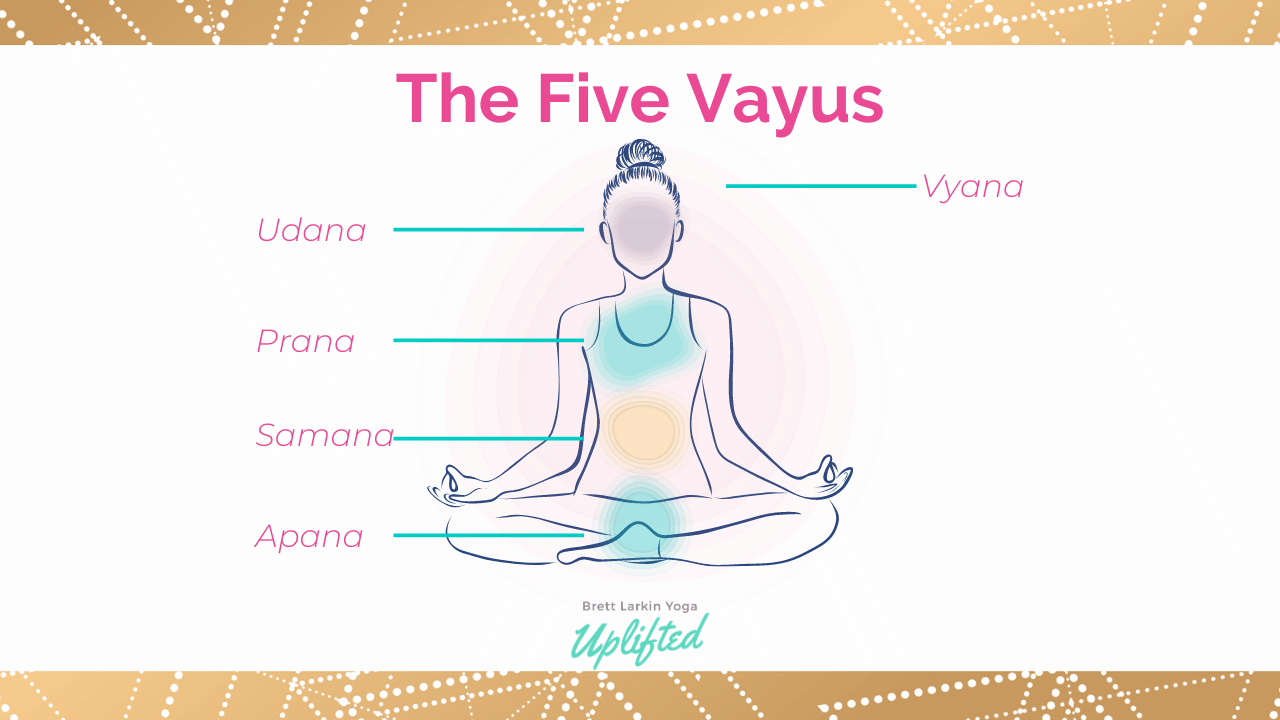
Let’s take a look at each of these prana flows:
1. Prana Vayu
Location: Chest, head
Functions: Regulates intake of air, inspiration, propulsion
This marks the inward motion of life force energy into your body. Prana vayu sits in the heart chakra and is governed by the element of air. It is the vital energy generated not just from the air you breathe, but also the food you eat, the liquids you drink, and the mental and sensory experiences you go through. Each time prana vayu moves from the throat chakra to the solar plexus chakra, it energizes all the other vayus.
2. Apana Vayu
Location: Pelvis
Functions: Regulates elimination, outward and downward movement
This is the vayu that regulates the outward movement of life force in your body. Seated at the root chakra, apana vayu enables your system to eject or eliminate whatever is not needed. Governed by the element of earth, this prana energy flow renders you the strength to let go of unwanted thoughts and difficult memories.
3. Samana Vayu
Location: Navel
Functions: Regulates inner absorption, consolidation, assimilation
This prana flow equalizes and balances everything your mind absorbs. Seated at the solar plexus chakra, Samana Vayu is responsible for digesting the information you gather and experiences you encounter, retaining what’s useful, and eliminating the rest. Governed by the element of fire, this Vayu helps manage the ego, peace, and harmony within you.
4. Udana Vayu
Location: Throat
Functions: Regulates speech, growth, ascension, expression
This prana flow regulates the upward movement of life force energy from the throat to the head. Udana Vayu is seated at the throat chakra and is known as the vayu for meditation. Governed by the element of ether, this vital movement controls the production of sound and speech.
5. Vyana Vayu
Location: Whole body
Functions: Regulates expansiveness, and circulation throughout the body
This prana energy flows through your whole body and is the subtle force that coordinates balances, and binds everything together. Corresponding to the sacral chakra, vyana vayu pervades all the 72000+ nadis in your nerves, muscles, veins, and joints, establishing a sense of oneness across your mind and body. Governed by the element of water, this movement of energy is called the ‘outward moving vayu’ as it helps you determine the boundaries through which you define yourself and the outside world.
Make your yoga practice 2x more potent in HALF the time (usually $47) FREE 👇
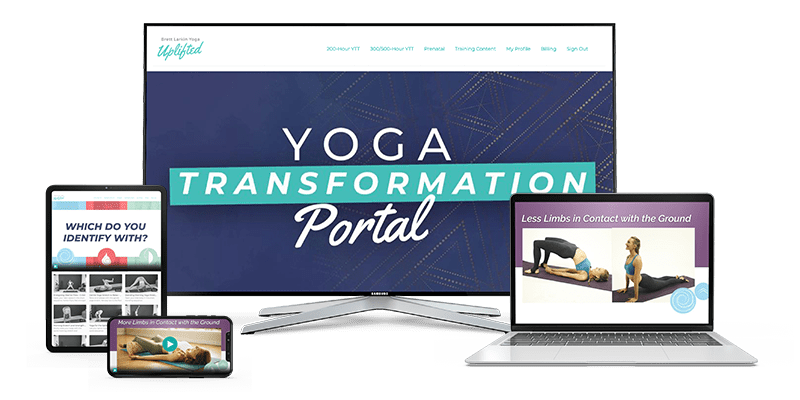
Make your yoga practice 2x more potent in 1/2 the time. FREE two-hour Yoga Transformation Portal (usually $47) [Claim it Free Here]

Ways To Use Prana Energy In Yoga
Awareness of prana energy is as important as mastering the art of meditation in yoga. Discovering your prana will help you become more mindful of what is happening within you and around you. Now, let’s circle back to pranayama, the practice of different breathing exercises to control and cultivate prana. I am listing down some of the most effective pranayama techniques you can try out to awaken the energy within.
1. Nadi Shodhana Pranayama/Alternate Nostril Breathing
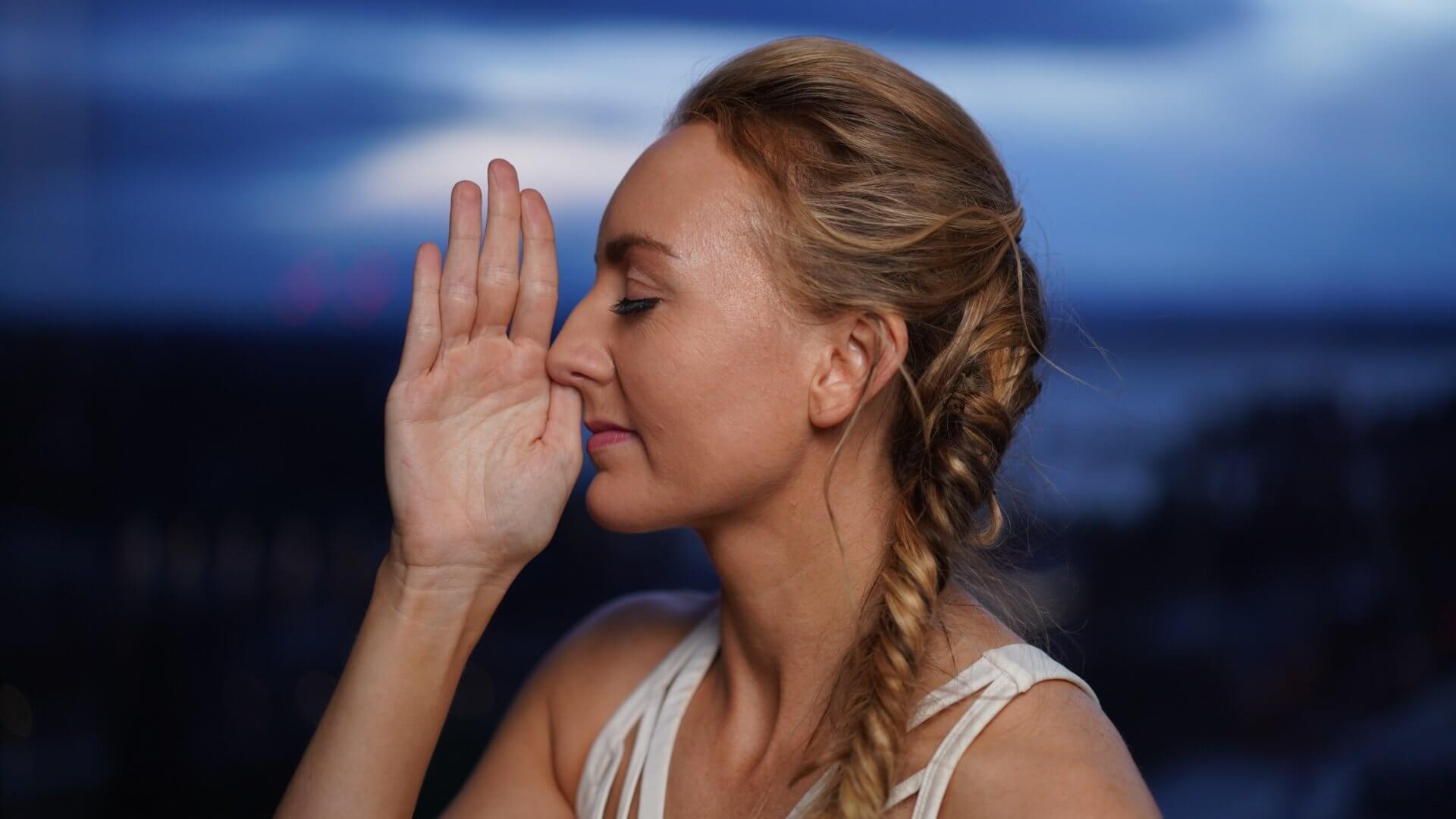
Nadi Shodhana Pranayama is one of the easiest breathing techniques you can practice to discover prana energy, and improve your mental health.
Sit in a comfortable position. Form the Vishnu mudra with your right hand—index finger and middle finger bent towards the palm, the thumb, ring finger, and pinkie raised up.
Close the right nostril with the thumb and breathe into the left nostril. Then close the left nostril with the ring finger and pinkie and exhale out of the right.
Now do it the other way around—inhale into the right nostril and exhale through the left.
Continue this cycle for about 10-20 rounds.
Benefits
- Alleviates stress and anxiety
- Rejuvenates the nervous system
- Clears respiratory channels
2. Dirga Pranayama or Three-part Breath
Dirga Pranayama is referred to as the ‘three-part breath’ because this pranayama exercise involves breathing into three different parts of your abdomen.
Start by identifying the three parts—the low abdomen (just below your belly button), the low chest (lower half of your rib cage), and low throat (above the top of the sternum).
Keep breathing steadily through your nose.
Now comes the important part—observe the movement of each breath—feel the inhalation move all the way from your low abdomen to your low chest, to your low throat.
Next, exhale the other way around—the exhalation starts at the low throat, moves to the low chest, and ends at the low abdomen.
Benefits
- Improves oxygen levels in the blood
- Helps calm nerves
- Prevents panic attacks
Note: You may find it difficult to track the movement of your breath initially. Begin by individually isolating each part with your hands to feel how the breath moves. Once you get a better hold of the energy flow, you can practice without hands.
3. Kapalabhati Pranayama or Breath of Fire
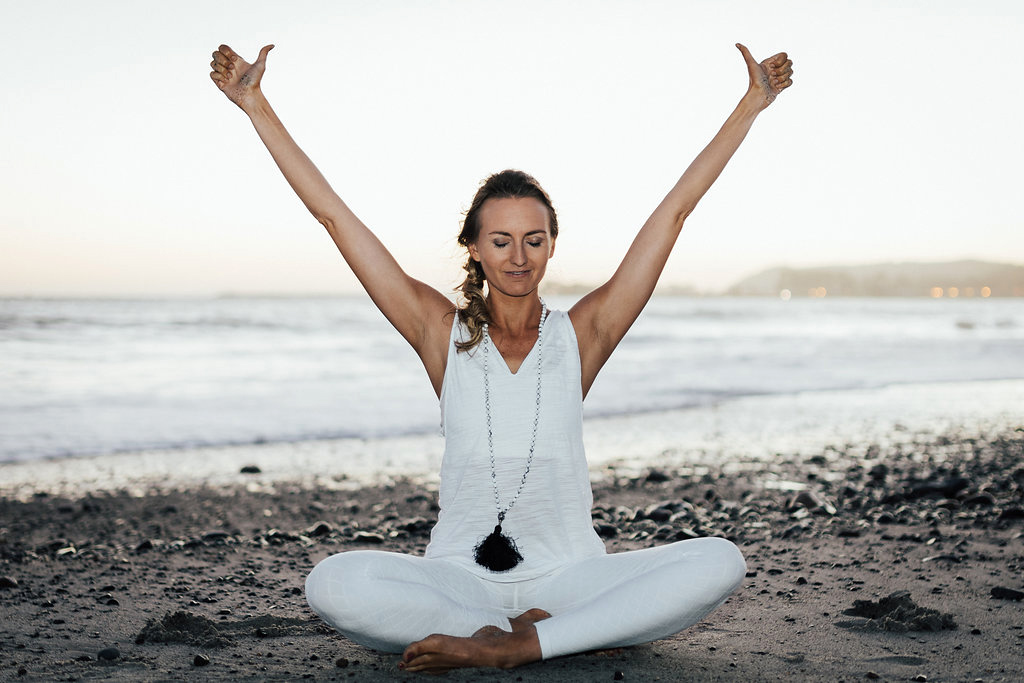
This pranayama technique is characterized by passive inhalation and active, forced exhalation.
Sit down in the easy pose on the floor. Inhale slowly through your nose and exhale forcefully, like blowing out a candle, but with your nose. When you exhale, your belly should pump into your spine.
Try to fit in about 30-40 exhalations per 30 seconds. Remember to keep the rhythm steady.
You can start off with 2-3 rounds of 30 exhalations each and gradually raise the tempo when comfortable.
Benefits
- Stimulates the brain and declutters the mind
- Releases tension
- Improves focus
Connecting with your prana energy and learning to differentiate your subtle body from your physical body could be a lifelong practice. But let me assure you that it is worth every bit of it! It is recommended that you practice pranayama before meditation as these routines complement each other. Pranayama readies your mind for meditation and helps you focus better and longer.
Try introducing a simple pranayama exercise to your daily meditation routine to see the difference for yourself. Trust me, the results can be life-changing! Drop comments or questions if any and I’ll surely respond to them.
Take care and stay safe.
Next Steps
- Take my History of Yoga Course to learn all about yogic principles and how they are applied to daily life!
- Order my Yoga Life book for a practical guide to applying yogic principles to your life and constitution.
- Check out my Yoga Philosophy knowledge hub for more inspiring content
- Join Uplifted for exclusive content that you can access right from the app. Take a deep dive into your practice with me this year!
Experience 3 Training Videos from Inside My 200-Hour Online YTT

YOU MIGHT ALSO LIKE
- What is Kriya Yoga? The Philosophy and Practice
- Uddiyana Bandha: Tapping Into Your Deep Core
- 4 Reasons Hasta Bandha Is Essential To Your Yoga Practice
- Vitarka Mudra: What It Is and How Do You Use It?
- Shakti Mudra: What It Is and How Do You Do It?
- Garuda Mudra: What It Is and How Do You Use It?
- Kali Mudra: What It Is and How Do You Do It?
- Shunya Mudra: What It Is and How Do You Do It?
- Varuna Mudra: What It Is and How Do You Use It?
- Vayu Mudra: What It Is and How Do You Use It?
- Samana Vayu: The Energy of Balance & How to Access It
- Apana Vayu: The Energy of Release & Surrender
- Udana Vayu: The Ascending Wind
- Prana Vayu: The Breath of Vitality
- Vyana Vayu: The Energetic Secret to Flow
Learn how to do 11 of the most popular yoga poses correctly. Free video + PDF download.











